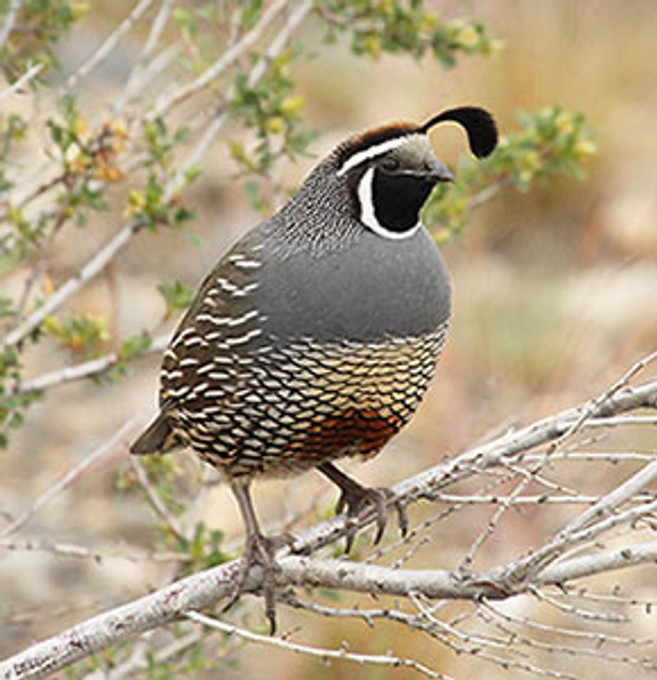Posted by Grange Co-op on 3rd Sep 2017
By: Grange Co-op's Laura Fleming
The busy summer has given way to a quieter autumn. By now, most of our migrating songbirds are on their way south, though a few stragglers stop by now and then. A beautiful Yellow Warbler stopped by recently for a drink and a few insects off my butterfly bushes, (a new bird to add to my yard list!), and I still see a few hummingbirds migrating through. I went through about 20lbs. of sugar this summer, filling… Read more
Posted by Grange Co-op on 1st Sep 2017
Male: dark crown, white-bordered black “cheeks” and black throat; prominent white “eyebrow”
Female: similar to male only with a grayish brown face and throat and smaller plume.
Plump bird with a gray breast, back and tail; “scaled” light brown to white appearance on the belly. Both genders sport a prominent teardrop-shaped plume on the forehead.NESTING:
Female builds a well concealed nest lined with grasses and dead leaves, usually place… Read more
Posted by Grange Co-op on 2nd Feb 2017
Here in the northwest, spring planting for certain plants and trees starts as early as late January! Look to Grange Co-op for the plants,
tools, and soil amendments you need to successfully get these first-of-the-season beauties in the ground and growing.
NOTE: All availability times provided are estimates. Please call your local Grange Co-op for current availability. Stocked varieties vary by store.
Primroses : One of the of… Read more
Posted by Grange Co-op on 25th Jan 2017
Bats are extremely beneficial mammals. Once their value for insect control is realized, many people want to encourage bats to live in their yards. Like all animals, bats have three basic necessities for life: food, water, and shelter. Here are some ways to attract bats to your yard:
KEEP YOUR BACKYARD NATURAL:
Keeping natural habitats such as trees, woods, and especially dead snags will provide homes for many bats species.
PUT UP BAT HOU… Read more




